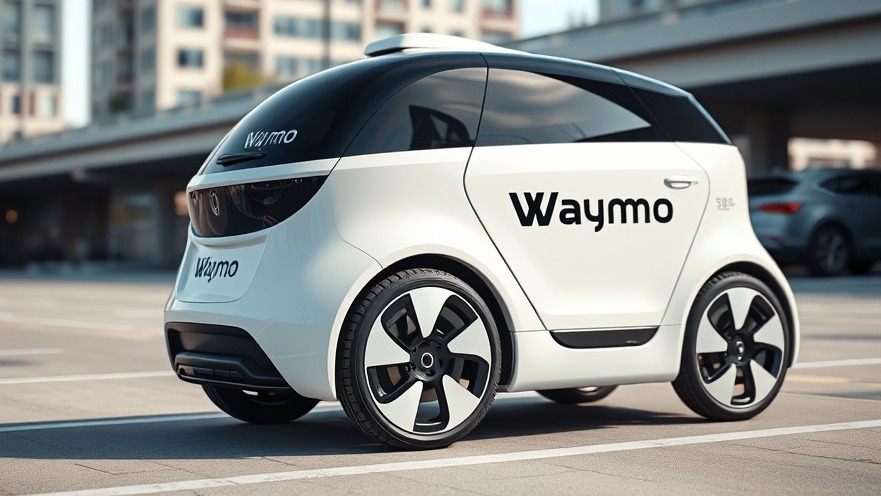
Waymo Rides Into Dallas: A New Era of Transportation
In a significant step forward for autonomous transport, Waymo has announced plans to launch its driverless robotaxi service in Dallas by 2026. This expansion comes on the heels of Waymo's successful debut in Austin, where it has been operating with Uber's backing. Waymo's ambition is not merely about adding another city to its roster; it aims to solidify its position as a leader in the rapidly evolving world of driverless technology.
Why Dallas? Exploring the Significance of this Move
Dallas, a vibrant urban center with a growing population, presents a prime opportunity for Waymo to showcase its expertise in autonomous driving. The addition of Dallas marks the second Texas city to welcome Waymo's fleet, highlighting the state's increasing importance as a hub for technology and innovation. The state's supportive regulatory environment for autonomous vehicles allows Waymo to conduct its operations more freely compared to other regions.
Competition in the Autonomous Driving Space
While Waymo takes strides toward establishing its services in Dallas, it faces stiff competition from emerging players in the autonomous driving sector. Tesla, for instance, recently rolled out a limited robotaxi service in Austin. However, the company has been beset by challenges, including ongoing lawsuits concerning the safety of its self-driving technology, leaving many questions lingering about the viability of their system.
Additionally, tech giant Amazon is also making moves with plans to introduce its own robotaxi service in Las Vegas through its Zoox division. Such initiatives apply pressure on Waymo as it seeks to carve out and maintain its market share against such formidable rivals.
A Closer Look at Waymo’s Operational Strategy
Unlike its Austin operation, where customers order rides through Uber's app, Waymo will operate its Dallas robotaxis independently. In partnership with the Avis Budget Group, Waymo intends to efficiently manage its fleet, ensuring a seamless experience for Dallas residents. This autonomous service is poised to complement existing transport options and is anticipated to ease congestion within the bustling Dallas metropolitan area.
Impact on Local Transportation and Economy
The introduction of Waymo's autonomous taxis will likely transform local transportation dynamics. With the potential to reduce traffic congestion and greenhouse gas emissions, these robotaxis embody a step toward environmentally sustainable urban mobility solutions. Furthermore, as people become accustomed to driverless rides, it could drive a shift in public perception about the safety and utility of autonomous vehicles.
Looking Ahead: Future Prospects for Waymo
As Waymo’s footprint expands, it is not just focusing on Dallas; the company is evaluating the feasibility of establishing robotaxi services in other Texas cities such as Houston and San Antonio. Beyond Texas, Waymo is looking at significant markets like New York, Boston, and even Tokyo, where the appetite for innovative transport solutions is strong. By venturing internationally, Waymo envisions capturing a share of the global autonomous driving market.
Public Reception: Concerns and Expectations
As with any novel technology, public reception will play a crucial role in how Waymo's operations are perceived and adopted. While there is excitement around the convenience of autonomous rides, residents may also harbor concerns about safety and job displacement in traditional driving roles. Educational initiatives about the technology’s capabilities and safety measures will be essential to foster acceptance and trust.
Concluding Thoughts: A Momentous Shift in Mobility
Waymo's push into Dallas symbolizes a pivotal moment in the transportation landscape. As the company continues to innovate and expand, the implications of this technology are significant, presenting not just challenges but also opportunities for cities and their residents. The narrative of driverless vehicles is just beginning, and how we adapt will shape the future of urban mobility.
 Add Element
Add Element  Add Row
Add Row 



Write A Comment